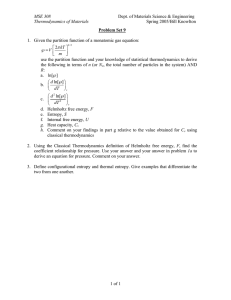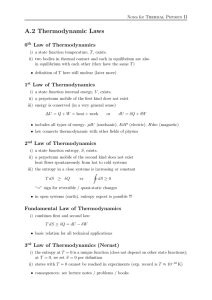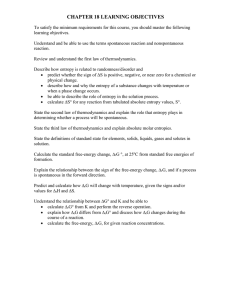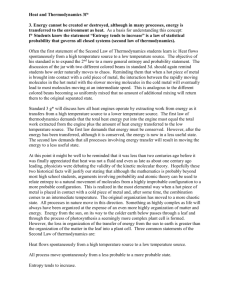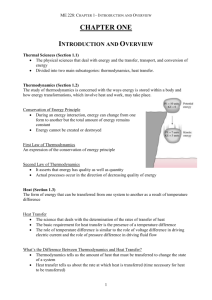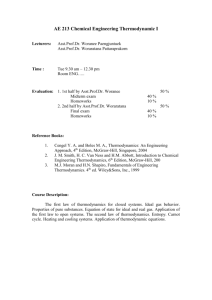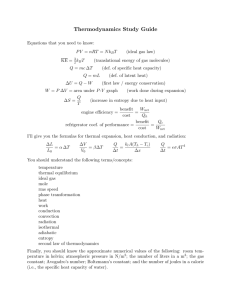File thermodynamics
advertisement
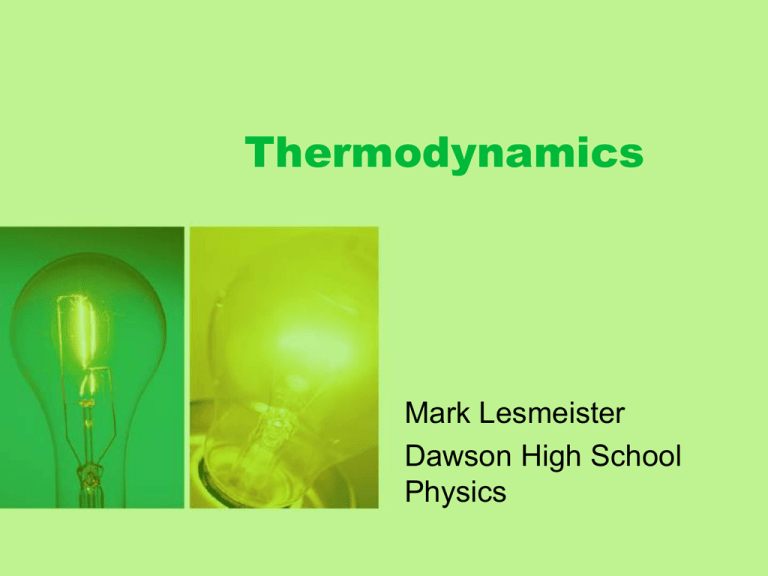
Thermodynamics Mark Lesmeister Dawson High School Physics Permissions • Text and original graphics © Mark Lesmeister and Pearland ISD. • This file and the original graphics are licensed under the Creative Commons Attribution-Share Alike 3.0 Unported license. You are free: – to share – to copy, distribute and transmit the work – to remix – to adapt the work • Under the following conditions: – attribution – You must attribute the work in the manner specified by the author or licensor (but not in any way that suggests that they endorse you or your use of the work). – share alike – If you alter, transform, or build upon this work, you may distribute the resulting work only under the same or similar license to this one. Energy Transfer • Energy can be transferred to (or from) a system in various ways: – Work can be done on (or by) the system. – Heat can be transferred to (or from) the system by • Conduction. • Convection. • Radiation. Mechanical Equivalent of Heat • Energy transferred to a system can become potential energy, kinetic energy or internal energy. From Harper's New Monthly Magazine, No. 231, August, 1869. Retrieved from Wikipedia Commons, May 2013. 1st Law of Thermodynamics • The change in the energy of a system is equal to the work done on the system plus the heat and radiant energy absorbed by the system. • The total energy of an isolated system does not change. W H E 1st Law of Thermodynamics • A roller coaster illustrates the First Law. Reversibility • http://jersey.uoregon.edu/vlab/Thermodyn amics/index.html • 2 Guys, 500 Pillows The Second Law of Thermodynamics • A system left to itself tends to go to a state with less order. – Increasing disorder decreases the energy available to do work. KE PE U Entropy • Entropy is a measure of the “disorder” in a system. • According to the 2nd Law of Thermodynamics, the entropy of the universe increases. • The entropy of a closed system increases unless work is done.

